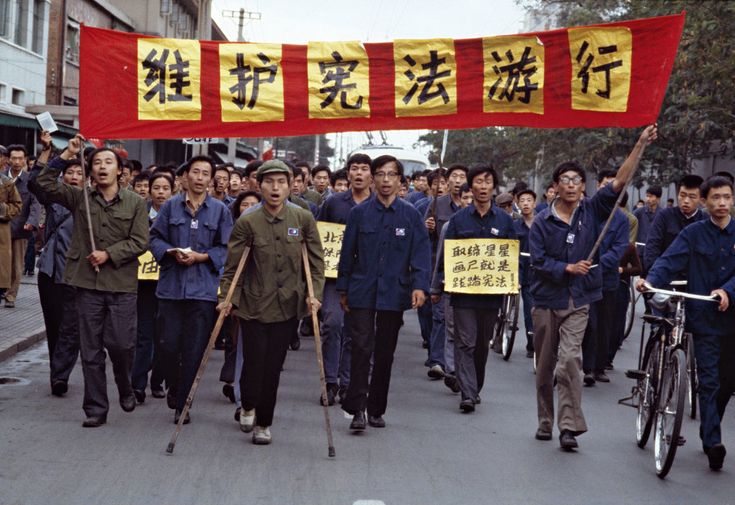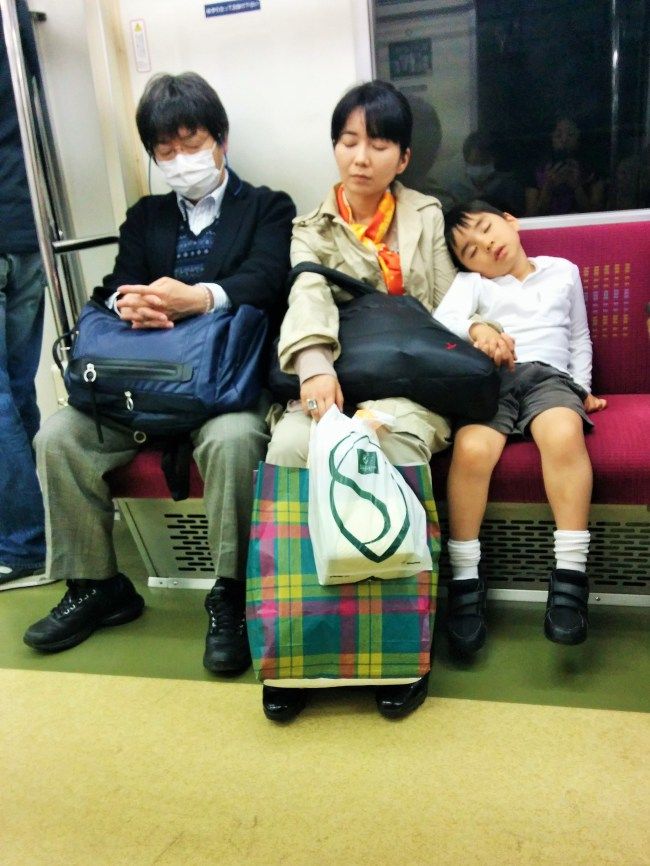The camera descends from the sky, a god’s-eye view of Tokyo at night. It is not a city; it is a galaxy laid out on the earth, a sprawling, pulsating network of light and energy. We glide over the iridescent towers of Shinjuku, the luxury storefronts of Ginza casting a warm, golden glow, and the iconic, human torrent of the Shibuya Crossing.
This is the Tokyo the world knows and desires. It’s a city of immaculate cleanliness, unparalleled safety, and futuristic efficiency. It’s the global image of Japanese success: a prosperous, harmonious, middle-class society where everything works, and everyone has their place. The narrative is powerful, relentlessly promoted in travel guides, films, and media. It is a city, we are told, that has vanquished the ugliness of urban decay and widespread poverty.
But hold the shot. Look closer. Pan away from the main arteries of light and into the dimly lit side streets. Zoom in on the 24-hour internet café, not filled with gamers, but with people sleeping in their office clothes. Focus on the elderly woman meticulously sorting cans from a trash bin with the quiet dignity of someone performing a sacred ritual. Follow the single mother as she rushes from her day job at a supermarket to her night shift cleaning offices, her face a mask of exhaustion.
This is the other Tokyo. The shadow city. It exists in the blind spots of the postcard-perfect image, thriving in silence and shame. This is the story of Japan’s most fiercely guarded secret: a deep and growing poverty that contradicts the nation’s core identity. It’s a poverty made all the more cruel by its invisibility, a struggle hidden in plain sight. This is what they don’t show you.
Part 1: The Myth of a Classless Society and the Shame of a Nation

To understand poverty in Tokyo, one must first understand why it is so deliberately and effectively hidden. The reasons are not just economic; they are deeply rooted in Japan’s post-war history and its cultural DNA.
The “100-Million-Strong Middle Class”
After the devastation of World War II, Japan performed an economic miracle. Propelled by lifetime employment, a strong social contract, and a collective national drive, the country became an industrial powerhouse. This period birthed a powerful national myth: the ichi-oku-sōchūryū, or the “100-million-strong middle class.” The idea was that nearly everyone in Japan belonged to a comfortable, stable middle class. Poverty was seen as a pre-war relic, an aberration that had been engineered out of society.
This myth became a cornerstone of the national identity. To be Japanese was to be middle-class. The flip side of this powerful idea was that to be poor was, in a way, to be un-Japanese. It was a personal failure, a source of profound shame (haji).
The Culture of Endurance: Gaman
Layered on top of this is the cultural concept of gaman—to endure hardship with stoicism and self-control. Complaining, showing weakness, or asking for help is seen as a burden on others and a loss of personal dignity. Japanese society prizes the person who suffers in silence.
When the “Bubble Economy” burst in the early 1990s, triggering decades of economic stagnation, the myth of the middle-class nation began to crack. Lifetime employment vanished for many, replaced by low-wage, insecure contract work. Yet, the cultural programming remained. The shame of poverty and the pressure of gaman created a conspiracy of silence. People would rather go hungry, lose their homes, or work themselves to the point of collapse than admit they needed help. This cultural context is the perfect incubator for invisible poverty.
Part 2: The Faces of the Invisible Poor

Poverty in Tokyo doesn’t look like the sprawling slums you might see in other parts of the world. It wears a clean shirt and tie. It lives in a space the size of a coffin. It is the face of your neighbor who always smiles and bows but whose refrigerator is empty.
The Working Poor: Akiko, the Single Mother
Meet Akiko, a 38-year-old single mother with an 8-year-old son. On paper, she is not unemployed. She works 40 hours a week as a cashier at a grocery store. But her contract is “non-regular,” meaning she has no benefits, no job security, and her hourly wage is barely above the minimum. It’s not enough to cover rent, utilities, and her son’s school fees in one of the world’s most expensive cities.
So, after her son goes to sleep at her mother’s apartment, Akiko goes to her second job: cleaning office buildings from 10 PM to 2 AM. She sleeps, on average, four hours a night. She lives in a state of perpetual exhaustion and anxiety. In Japan, single mothers face a triple penalty: the gender pay gap is one of the worst in the developed world; social stigma remains high; and the support systems are notoriously difficult to navigate. Akiko is a prime example of the “working poor”—people who are fully employed yet trapped in a cycle of poverty, invisible because they are always rushing from one low-wage job to the next.
The Elderly Left Behind: Mr. Sato and His Pension
Mr. Sato is 78. He worked his entire life as a loyal salaryman for a small manufacturing company. He contributed to his pension and expected a modest but secure retirement. But his company went under in the 2000s, and his pension is far less than he anticipated. It’s not enough to cover the rent on his small, aging apartment and his rising medical bills.
He is too proud to apply for welfare. The process is invasive, and the stigma is too much to bear. So, every morning, before the sun rises, he walks the streets of his neighborhood, collecting aluminum cans. The few hundred yen he earns is the difference between eating a proper meal and subsisting on instant noodles. He is one of Japan’s “silver poor,” an army of elderly citizens whose reward for a lifetime of hard work is a retirement spent in quiet desperation. His isolation makes him a prime candidate for kodokushi—a lonely death, to be discovered only weeks later.
The Disposable Youth: Kenta, the “Net Café Refugee”
Kenta, 24, graduated from a decent university with a degree in literature. He dreamed of working in publishing. But he entered a job market saturated with precarious work. Unable to land a full-time position, he became a freeter—a “freelance part-timer.” He bounces between convenience store shifts, delivery gigs, and temporary event staffing.
He couldn’t afford the exorbitant initial costs of renting an apartment (key money, deposit, guarantor fees). So, his home is a 2×2 meter cubicle in a 24-hour internet café in Shinjuku. For about 2,000 yen ($15) a night, he gets a reclining chair, a computer, and unlimited soft drinks. He showers at a public bathhouse. His belongings fit in a single locker. He has no permanent address, making it even harder to secure a stable job. He is a “net café refugee,” part of a growing class of young people who have fallen through the cracks, living a transient, digital-age version of homelessness, utterly invisible to the system.
Part 3: The Geography of Hardship – Where Poverty Hides
While poverty is dispersed and hidden, there are specific places in Tokyo where the cracks in the facade are visible, if you know where to look.
Sanya: The Ghost of the Past
The district of Sanya was once Tokyo’s most notorious yoseba, a day-laborer slum where men would gather at dawn hoping to get picked for a day of construction work. Today, the work has mostly dried up. Sanya is now a district of ghosts—the same men, now old and frail, living in cheap flophouses, surviving on welfare. It’s a concentrated pocket of elderly, male poverty, a stark reminder of the disposable nature of manual labor.
The 24/7 Sanctuaries: Internet Cafés and Family Restaurants
The modern-day equivalents of Sanya are not geographical districts but temporal ones. They are the businesses that never close. Internet and manga cafés (manga kissa) have become de facto homeless shelters for thousands. They offer a cheap, anonymous, and relatively safe place to spend the night. Similarly, family restaurants like Gusto or Saizeriya see a late-night clientele nursing a single drink from the all-you-can-drink bar for hours, seeking warmth and shelter until the first train in the morning.
Kodomo Shokudo: The Hope and the Horror
Perhaps the most heartbreaking and revealing sign of modern poverty is the rise of kodomo shokudo, or “children’s cafeterias.” These are grassroots, volunteer-run initiatives that offer free or very cheap meals to children. They started as a way to help children from low-income families get at least one nutritious meal a day.
Their proliferation across Tokyo is a double-edged sword. On one hand, it’s a beautiful testament to community spirit and mutual aid. On the other, their very existence is a damning indictment of the state’s failure to address child poverty, which in Japan is shockingly high for a developed nation, particularly in single-parent households. These cafeterias are a quiet admission that thousands of children in the world’s wealthiest metropolis are going hungry.
Conclusion: Waking from the Dream
The shimmering, futuristic vision of Tokyo is not a lie, but it is a meticulously edited truth. It’s a story with crucial chapters torn out. The reality is that the city’s gleaming efficiency is often subsidized by the silent, underpaid labor of a vast, precarious workforce. Its famous social harmony is maintained by a cultural pressure that forces the struggling to hide their pain.
The poverty of Tokyo is a poverty of isolation, of shame, and of systemic neglect. It is the single mother choosing between sleep and feeding her child. It is the elderly man who built the nation’s prosperity now counting yen for a bowl of noodles. It is the university graduate whose future is a 2×2 meter box.

